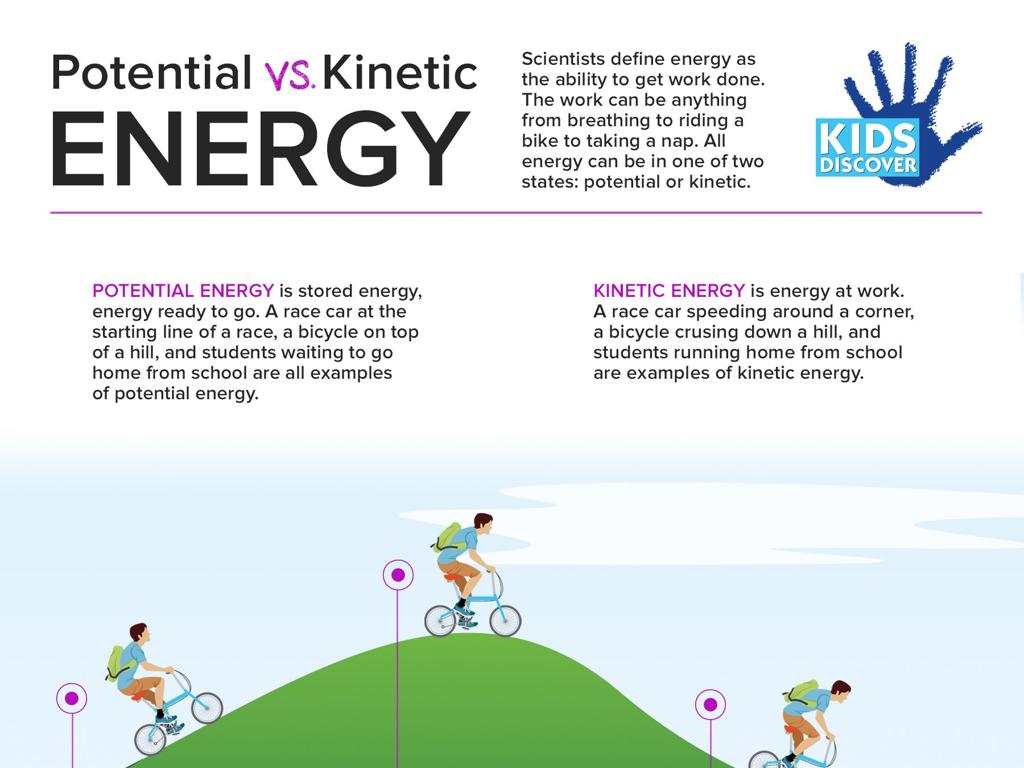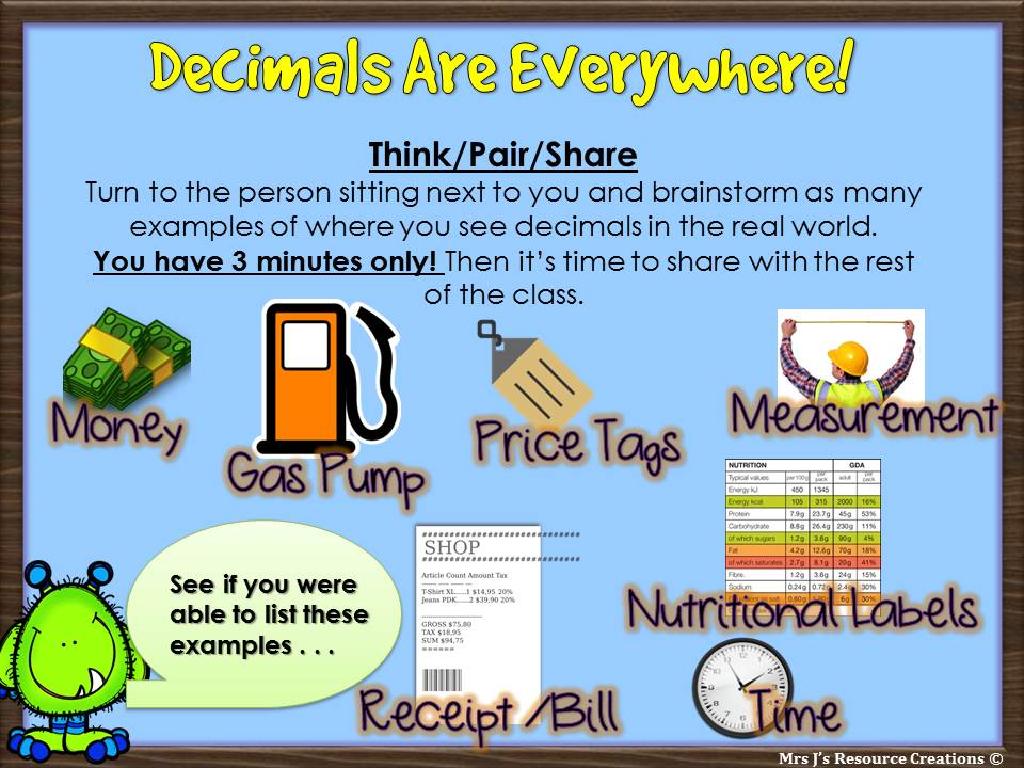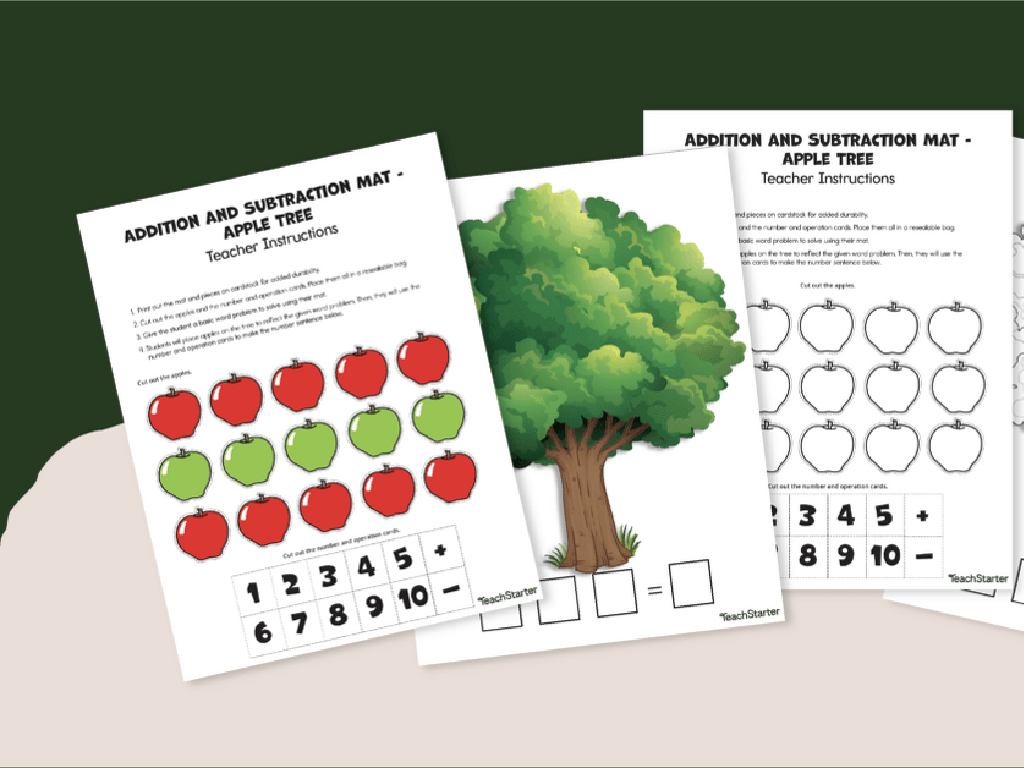Understand Overall Supply And Demand
Subject: Social studies
Grade: Sixth grade
Topic: Supply And Demand
Please LOG IN to download the presentation. Access is available to registered users only.
View More Content
Introduction to Supply and Demand
– Basics of market economics
– A market is where buyers and sellers meet.
– Defining supply and demand
– Supply is how much is available, demand is how much people want.
– The role of supply and demand
– They determine the price and quantity of goods.
– Significance in everyday life
– Helps us understand shopping, selling, and saving.
|
This slide introduces the foundational concepts of supply and demand, which are crucial for understanding market economics. Begin by explaining what a market is a place where people buy and sell goods and services. Then, define supply as the amount of a product or service available, and demand as the desire for it, emphasizing how both are essential for setting prices. Discuss the importance of supply and demand in everyday life, such as how they affect the cost of groceries, toys, and other items students encounter. Encourage students to think of examples where they have seen supply and demand in action, like a popular toy becoming more expensive during the holiday season.
Exploring Supply in Economics
– Define the concept of supply
– Supply is the total amount of a product or service available for purchase.
– Explore factors affecting supply
– Costs, technology, and competition can change supply levels.
– Real-world supply examples
– Local farmers’ market produce variety depending on season.
– Understanding supply’s role
|
This slide introduces the concept of supply, a fundamental element in the study of economics, particularly within the framework of supply and demand. Begin by defining supply as the total amount of a good or service that is available for consumers to purchase. Discuss various factors that can influence supply, such as production costs, technological advancements, and the level of competition in the market. Provide relatable examples, such as how the variety of fruits and vegetables at a local farmers’ market can change with the seasons, illustrating how supply can vary based on different conditions. Emphasize the importance of understanding supply’s role in the economy and encourage students to think of other examples they encounter in everyday life.
Exploring Demand in Economics
– Define the concept of demand
– Demand is the desire to own something and the ability to pay for it.
– Explore factors influencing demand
– Price, income levels, and consumer preferences are a few factors.
– Observe examples of demand
– Examples: High demand for trendy sneakers or seasonal fruits.
– Discuss demand’s role in markets
|
This slide introduces the concept of demand, a fundamental idea in economics that describes consumers’ willingness to purchase goods and services. Begin by defining demand, emphasizing the need for both desire and purchasing power. Discuss various factors that can influence demand, such as changes in price, shifts in consumers’ income, and changes in tastes or preferences. Provide relatable examples, such as the increased demand for certain toys during the holiday season or the latest technology releases. Encourage students to think of items they have recently wanted and what influenced their desire to have them. This will help students understand how demand plays a crucial role in the functioning of markets and the economy.
The Law of Supply and Demand
– Interaction of supply and demand
– When demand increases, supply decreases, prices may go up.
– Understanding market equilibrium
– Equilibrium is when supply equals demand, stabilizing prices.
– Seasonal fruits as an example
– In summer, watermelons are abundant and cheaper.
|
This slide introduces the fundamental concept of supply and demand, which is the backbone of economics. Explain how the availability of goods (supply) and the desire for them (demand) determine the price. Use the example of seasonal fruits to illustrate this: for instance, watermelons in summer are plentiful, making them less expensive. Conversely, when they’re out of season, they’re scarce and thus pricier. Equilibrium is the sweet spot where the amount of goods supplied perfectly meets the demand at a stable price. Encourage students to think of other examples where they have seen prices change due to supply and demand.
Shifts in Supply and Demand
– Causes of supply and demand shifts
– Factors like trends, income changes, and seasons can shift supply and demand.
– Impact on market equilibrium
– When supply and demand shift, prices and availability in the market change.
– Scenario: Popular toy release
– Consider how a hot new toy affects the market before and after its release.
– Understanding market dynamics
|
This slide aims to explain the concept of shifts in supply and demand to sixth-grade students. Begin by discussing various factors that can cause these shifts, such as changes in consumer preferences, income levels, and seasonal changes. Then, explore how these shifts can affect market equilibrium, including changes in price and product availability. Use the example of a popular new toy release to illustrate how high demand and limited supply can lead to price increases and shortages. This scenario will help students grasp the real-world implications of supply and demand dynamics. Encourage students to think of other examples and discuss how shifts in supply and demand might play out.
Supply and Demand in Our Daily Lives
– Everyday supply and demand
– Items at the store and online shopping deals
– Price changes explained
– High demand with low supply often means higher prices
– Ice cream sales in summer
– Discuss reasons for seasonal demand increase
– Understanding market dynamics
|
This slide aims to help students recognize the concepts of supply and demand in familiar settings. Start by discussing how the availability of products (supply) and the desire for these products (demand) can affect their everyday lives, such as the number of toys in a store or sales during holidays. Explain how prices can go up or down based on changes in supply and demand. Use the example of ice cream sales increasing during summer to illustrate how seasons can affect demand. Engage the class in a discussion about why they think this happens, prompting them to consider factors like weather and holidays. This will help them understand how market dynamics can influence business decisions and consumer behavior.
Class Activity: Supply and Demand Game
– Divide into groups for market simulation
– Choose a product to ‘sell’ or ‘buy’
– Observe price changes in the game
– How do prices go up or down based on availability and desire?
– Reflect on supply and demand effects
– Discuss how scarcity or abundance affected your decisions
|
This interactive class activity is designed to help students understand the concepts of supply and demand through a hands-on market simulation. Students will be divided into small groups, with each group choosing a product to ‘sell’ or ‘buy’. They will simulate a market environment where they negotiate prices and make trades. The teacher should observe and guide the activity, ensuring that students experience how prices can fluctuate based on the supply of the product and the demand from buyers. After the activity, lead a discussion on how the game reflects real-world economic principles, asking students to share how scarcity or abundance of their product influenced their decisions. Possible variations of the activity could include setting different starting budgets, introducing unexpected changes in supply, or having external events impact demand.





